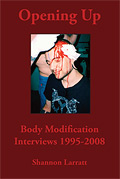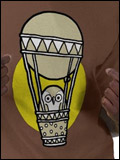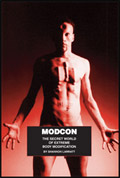Thanks to Cerra giving me a copy of The Hatha Yoga Pradipika (which I am very certain many people reading this have read), I've been able to add a better entry on Khecharimudra to the BME/Encyclopedia. The tongue splitting has had a little on it in the past, but this is the source.
| Khecharimudra is a hatha yoga practice which involves surgically lengthening the tongue (and by some accounts splitting it as well). The tongue is then flipped back inside the nasal cavity for use in breath control related yoga. Svatmarama describes this practice in the still popular 15th century text The Hatha Yoga Pradipika. The following translation is from Brian Dana Akers. Notes in italics have been added by me.
Turn the tongue backward and insert it into the skull cavity. Direct the gaze to the middle of the brows. This is Khecharimudra. Gradually elongate the tongue by cutting, shaking, and stretching it until it touches the middle of the brows. Then Khechari is accomplished. In his introduction Akers notes that there has always been disagreement over which yogic activities should actually be put into practice (this disagreement is noted even in this pradipika), and emphasizes, “some practices in this book I don't recommend at all.” In modern times (and quite likely five hundred years ago as well), surgical alteration of the tongue is seen as a fringe practice and is not accepted into the mainstream of yoga. That said, there it is, plain as day, in one of the most profound sections of one of the core texts. Khecharimudra serves as an excellent example of the spiritual application of extreme body modification. |



Post a Comment